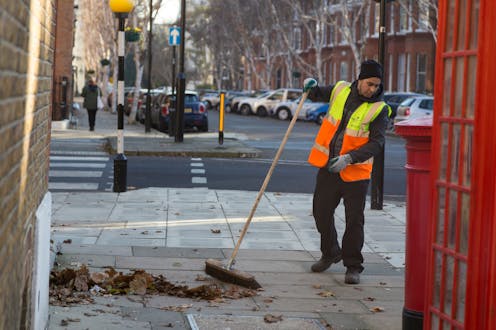UK minimum wage to rise – here’s how it could really tackle the cost of living and inequality
- Written by Mathew Johnson, Senior Lecturer in Employment Studies, University of Manchester

After more than a decade of stop-start minimum wage policy under the Conservatives, much has been made of the incoming Labour government’s intentions to raise the national minimum wage up to the level of a “real living wage”[1].
The minimum wage is solid home turf for this government. It was Labour’s flagship wage policy when it was last in power up to 2010, and successfully reduced[2] wage exploitation and narrowed the gap between the lowest and middle earners.
So, it is great to see Jonathan Reynolds, the business secretary, acting quickly to update the remit[3] of the independent Low Pay Commission (LPC) to incorporate cost of living considerations into future recommendations. The government also plans to gradually merge the 18-20 years youth rate with the rate for workers aged 21 and over so every adult is entitled to the same minimum wage.
The question is, does the new remit go far enough? The newly explicit consideration of inflation pressures in the annual calculation of the minimum wage, is a welcome development and will provide some cushioning for working families. However, the recommended use of the annual average CPI (Consumer Price Index) inflation rate risks underestimating the cost of living pressures faced by minimum wage workers in low income households.
This is because they spend more of their income[4] on rent, food and energy costs, which often register higher than average price rises. Other countries, like France, use income-adjusted inflation measures when they fix their rate, and Britain should also do this.
The other problem is that sticking to an annual uplift with no in-year adjustments is problematic when there are monthly inflation spikes. Annual increases of nearly 10% in 2023 and 2024 were welcome, but by the time the minimum wage rise came through in April, high inflation had eroded minimum wage workers’ living standards.
The result of this delayed annual catch-up process is a month-by-month struggle to keep up with rising prices, increasing the risks of indebtedness and in-work poverty.
Three European countries[5] (Belgium, France and Luxembourg) have pioneering procedures that trigger within-year minimum wage rises and this ought to have been considered for the UK.
Increases since 2016 have pushed the minimum wage up to two-thirds of median earnings, the middle point of the wage range. This level was an explicit goal of the past Conservative government. They wanted a wage floor at the internationally-recognised threshold of low pay, while also seeking to reduce Universal Credit claims among minimum wage workers living in poor households.
The new remit of the Low Pay Commission suggests the Conservative government’s goal is right, that two thirds of median earnings is a fair level for the minimum wage. But this deserves further scrutiny.
Given high levels of inequality in the UK[6], the minimum wage has to do more work to compensate for the realty of wage injustice and low relative living standards. In high inequality countries the average wage is pulled up by rising living standards among higher earners, while the median wage is dragged down by large shares of low-wage earners.
Raising the minimum wage to say 70% or 75% of median earnings or, better still, changing the benchmark to the average wage (£20.09) instead of the median wage (£15.83) would work to counteract this.
Workers in other countries can also lean more heavily on systems of collective bargaining and union representation to bargain their pay. In the UK workers in cleaning, social care[7], retail and hospitality, among others, are paid the minimum wage or just a pound or so higher, so depend very much on the government fixing a decent level of the minimum wage.
In the absence of coordinated agreements on pay, hours and working conditions, there is also little to stop employers offsetting higher hourly wage rates by cutting working hours, overtime and staff perks[8] such as subsidised meals.
Many low-paying firms also make extensive use of part-time workers who are less likely to have access to on-the-job training and progression routes through internal labour markets.
In the long term, in order to achieve more widespread wage gains in tandem with learning new skills, the UK needs to explore alternative and improved systems of wage setting. The new government’s proposed fair pay agreement[9] for social care is very promising in this regard. If the UK is serious about breaking out of a low skill and low wage dynamic, then more far-reaching measures like these will be needed.
References
- ^ “real living wage” (livingwage.org.uk)
- ^ successfully reduced (assets.publishing.service.gov.uk)
- ^ update the remit (www.mirror.co.uk)
- ^ they spend more of their income (ifs.org.uk)
- ^ Three European countries (www.eurofound.europa.eu)
- ^ inequality in the UK (equalitytrust.org.uk)
- ^ social care (onlinelibrary.wiley.com)
- ^ staff perks (assets.publishing.service.gov.uk)
- ^ The new government’s proposed fair pay agreement (labour.org.uk)







